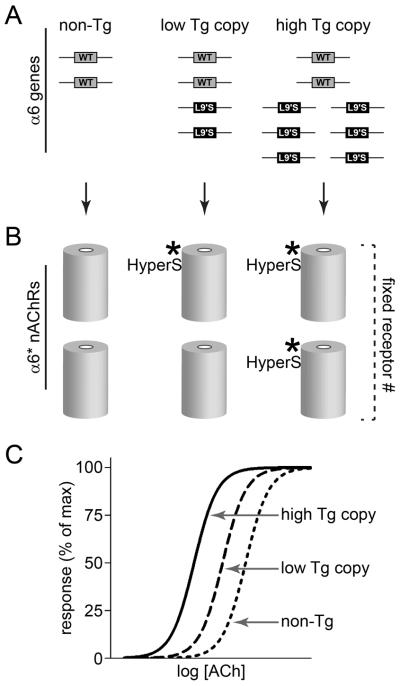Figure 6.
A putative model describing the mechanism of α6 L9′S transgene-induced hypersensitivity. A. Comparison of α6 L9′S allele copy numbers among the strains studied in this paper. B. Effects on sensitivity of the α6* nAChRs in DA neurons. Elevated α6 L9′S allele copy number produces a greater fraction of hypersensitive nAChRs (abbreviated HyperS) in the α6β2* receptor pool. However, previous data show that even the greatest copy numbers do not substantially alter the size of the pool, presumably because this is limited by other factors (perhaps β2 or β3 subunit pools). Results in this study indicate that addition of two α6 L9′S alleles (e.g. α6 L9′S lines 9, 15, and 29) to the two endogenous WT α6 alleles produces modest hypersensitivity at α6* nAChRs.. In contrast, six or more α6 L9′S alleles (e.g. α6 L9′S lines 2, 5, and 11) is sufficient to out-compete production of WT α6 subunits from the two endogenous α6 alleles, resulting in a pool of α6β2* receptors with marked sensitivity. C. Idealized ACh concentration-response curve for behavioral or physiological responses, comparing response magnitude in mice with zero (“non-Tg”), two (“low Tg copy”; lines 9, 15, and 29), and six or more (“high Tg copy”; lines 2, 5, and 11) α6 L9′S alleles.

